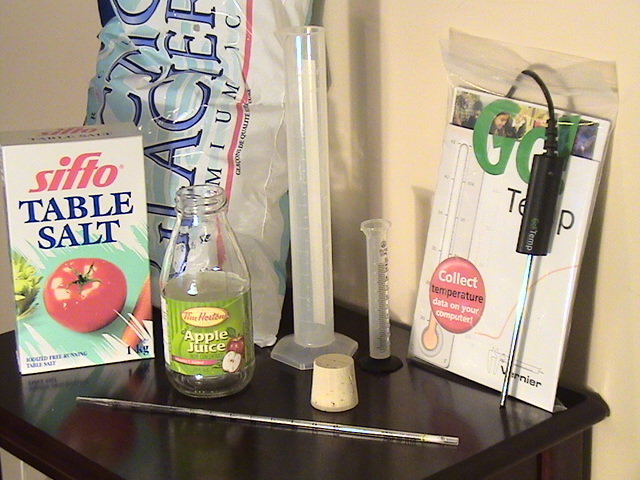Lab 2: Thermal Expansion of Water
According to the atomic theory, matter is made of atoms. However, the atoms (or the molecules) in a certain material are not stationary. In solids, they continuously vibrate, while in liquids and gases, they move rapidly in random directions and bounce against each other. As the temperature of the material increases, so does the vibration amplitude or the average distance travelled by an atom (or molecule) between bounces. This, in turn, increases their separation, causing the material to expand. The same principle applies to water (in general) with a very interesting exception observed at temperatures near the freezing point!
Objectives
After completing this experiment, you should be able to
- discuss the general relation between volume and temperature for water.
- discuss the anomalous behaviour of water near the freezing point.
- demonstrate such behaviour.
Reading Assignment
Before starting this experiment, make sure you read
- sections 13-1 to 13-4 in the eText.
- the proposed theory to be tested in this experiment.
Equipment
For this experiment you need several items from the lab kit, which include the graduated cylinders, cork, pipette and the temperature probe “Go! Temp.” In addition, please provide a medium-sized glass bottle (about 250-350 mL in volume) that can fit the supplied cork tightly. You should also provide about 2 kg of crushed ice and about 100 g of table salt (see picture below). You will also need a computer with a USB port.
Save this printable paper ruler on your computer, since it is needed in the experiment. For other styles see this website.

Procedure
Before starting the experiment, make sure the Logger Pro software is installed on your computer. After installation, connect the temperature sensor to the USB port in your computer and start the program. Familiarize yourself with the different menus and screens and make a few temperature tests.
To perform the experiment, follow this procedure. The pictures referred to in the procedure appear below (click to enlarge).
Note
If you attempt this experiment without success, contact your tutor and provide a clear picture of your setup. Your tutor may decide to send you pre-collected data for analysis.
 |
 |
 |
 |
 |
 |
 |
Picture 1 |
Picture 2 |
Picture 3 |
Picture 4 |
Picture 5 |
Picture 6 |
Picture 7 |
 |
 |
 |
 |
Picture 8 |
Picture 9 |
Picture 10 |
Picture 11 |
Analysis and Discussion
In this part of the lab, you will discuss the validity of the proposed theory based on your measurements and data collected. You have some freedom in choosing the appropriate method to analyze your data and to make your arguments. However, your analysis and discussion must be relevant, convincing, and conclusive. Where appropriate, always support your writing with graphs, diagrams, and detailed calculations.
Here are some guidelines for the analysis and discussion.
Questions
Give detailed answers to the following questions at the end of your lab report.
- Based on your data, estimate the coefficient of volume expansion of water at 20°C. Compare it with the expected value from Table 13-1 in the eText.
- If a bottle made of Pyrex glass is used instead of the ordinary glass bottle, how would this affect the accuracy of your results? Explain.
Prepare your lab report for this experiment and submit it for marking.